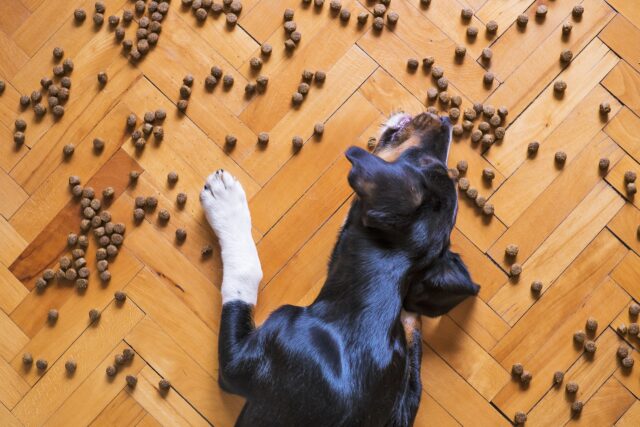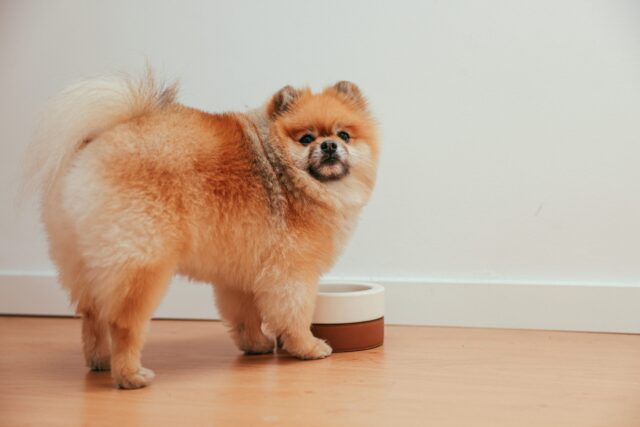We all have a routine for feeding our dogs. Most dog parents like to find a fast and efficient way for preparing their dog’s meals. However, a recent study from North Carolina State University showed that the way many dog parents handle dog food could be unhealthy for humans and canines.
Fewer than 5% of the dog parents in the study were aware of the Food and Drug Administration’s safe pet food handling guidelines. So, they conducted a study to examine how much those guidelines can affect the safety of a household.

The Study
Researchers asked 417 people if they were aware that the FDA had guidelines for handling and storing pet food. Only 5% were, and only about one-third of them followed the guidelines in their daily routines. So, 50 dog owners were divided up into three groups.
“Most pet owners are unaware that pet food bowls can be a hidden source of bacteria in the household,” researchers said. “Knowing how to mitigate this risk and practice proper pet food storage and hygiene may make for a happier, healthier household.”
Group A followed the basics of the FDA’s tips, which included washing hands after handling dog food and washing the food bowl every day. Group B had similar rules, but with more complex instructions. They had to wash their hands for at least 20 seconds each time, wash the bowls with hot water, and scrape food off the bowls before washing. Group C didn’t have any specific instructions to follow.
Researchers swabbed the bowls before and after the study to compare. Groups A and B showed a significant decrease in the risk of contamination, while Group C’s changes were minor. The study proved that following the FDA’s recommendations can reduce the risk of dangerous bacteria spreading through dog food.

What are the FDA Guidelines for Dog Food Handling?
The FDA has very detailed guidelines for safely handling and storing dog food. Here are their tips for handling dog food:
- Wash your hands with soap and water after every time you handle dog food.
- Don’t scoop the food using your dog’s bowl. Instead, use a clean scoop or cup.
- Wash and dry dog food bowls and scoops every day.
- Don’t let your dog lick near your face after eating. Wash any body parts they lick using soap and water.
Related: Best Dog Foods Rated
Here are the FDA’s dog food storage tips:
- Keep the pet food in the original container, so information like UPC and lot number are easily accessible.
- If you store the pet food in a separate container, make sure it’s clean. Save the information from the food bag in case of an emergency.
- Keep dry dog food and unopened canned food in a dry, cool location.
- Refrigerate or throw out unused canned food.
- Store and prepare dog food away from where human food is stored.
Raw pet food has different regulations:
- Keep raw food frozen until you’re ready to use it.
- Don’t store raw food too close to human food in the fridge or freezer.
- Don’t thaw raw food on the counter or in the sink.
- Throw away thawed raw food that isn’t eaten.
- Wash your hands, bowls, and counters after every meal.

Did This Research Help?
Before this study was conducted, only 34% of participants washed their hands after handling dog food. 22% of dog parents washed their dog bowls once a week, and only 12% washed them daily. 18% admitted to not washing their bowls for three months or longer. 33% prepped the dog food near human food, and 43% stored the food within five feet of human food.
Following all the guidelines can help reduce bacteria being passed to you and your dog, but pet parents are unsure if they’ll follow through even after this study. Only 20% of people from groups A and B said they planned to follow the FDA’s guidelines long-term. Only 8% were planning to follow every guideline.
RELATED: 7 Cleaning Tips For Dog Owners
The FDA’s guidelines for handling and storing dog food might seem tedious, but the safety of you and your dog is a priority. A few extra steps could keep your family safe in the long run, so consider implementing these tips into your daily routine.
H/T: cleveland.com
 Toledo, United States.
Toledo, United States.